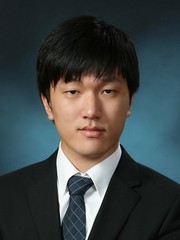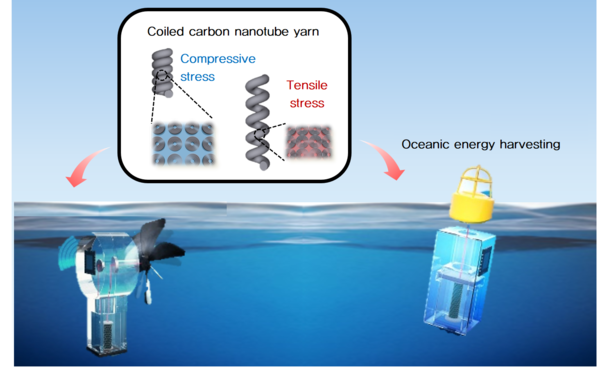It is important to establish a system capable of monitoring for 24 hours in prediction and prevention of environmental disaster. For constant monitoring of large areas, remote exploration devices with batteries are mainly used. However, batteries that require periodic charging and replacement have drawbacks, especially in condition of monitoring extreme areas where it its difficult for people to approach.
In order to resolve this shortcoming, Professor Choi Joon-myung of Hanyang University’s Department of Mechanical Engineering and Korea Institute of Industrial Technology (hereinafter KITECH) jointly conducted research and succeeded in development of an energy harvester that produces electrical energy in vibrations below 1Hz that occur in wind, waves, and ocean currents.
The energy harvester turns out to have the world’s best performance (1.6-10.45 mW/㎤), demonstrating that self-generation for a long period under ocean is possible.
The secret of this technology lies in the meticulous structural design and unique fabrication method of coiled carbon nanotube (CNT). Th e joint research team has developed a new “L-twist” process that evenly arranges carbon nanotube threads in the longitudinal direction and twists them.
The “L-coiled yarn” made by the process has a structure specialized in converting mechanical energy into electrical energy, which has four times higher in energy production density and twice higher in energy conversion efficiency than all materials reported in the academia.
In particular, the energy harvester made of L-coined yarn achieved the volumetric power of 1.6–10.45 mW/㎤ at 0.1-1 Hz of mechanical fluctuations, similar to the volumetric power that 20 electric eels can produce. In addition, stable production of electric energy is possible in seawater for a long time due to its good durability.
Professor Choi said, “This research is significant in that it enables the semi-permanent monitoring of in-ocean inspection.” Kim Shi-hyeong of KITECH suggested more diverse uses, saying, “Since L-coined yarn has excellent mechanical and chemical stability, it can be used not only in ocean but also in the atmosphere. In other words, it can be used in most environments on Earth.”
The joint research team participated as a mutual partner in the Graduate School of HYU-KITECH joint Department established in March 2021 to strengthen the partnership in education as well as in academic research. This study, which has resulted from these active exchanges, was published on September 18 in the world’s renowned journal 「Advanced Science, IF=17.521」, in recognition of its academic excellence.
Meanwhile, the joint research team has been conducting various studies for clearer understanding of fundamental principles in electrochemical-based energy harvester. In addition to further improving the performance of the single energy harvester, they are striving to the commercialization through the combination of technologies for large-scale production.




 '한양위키' 키워드 보기
'한양위키' 키워드 보기